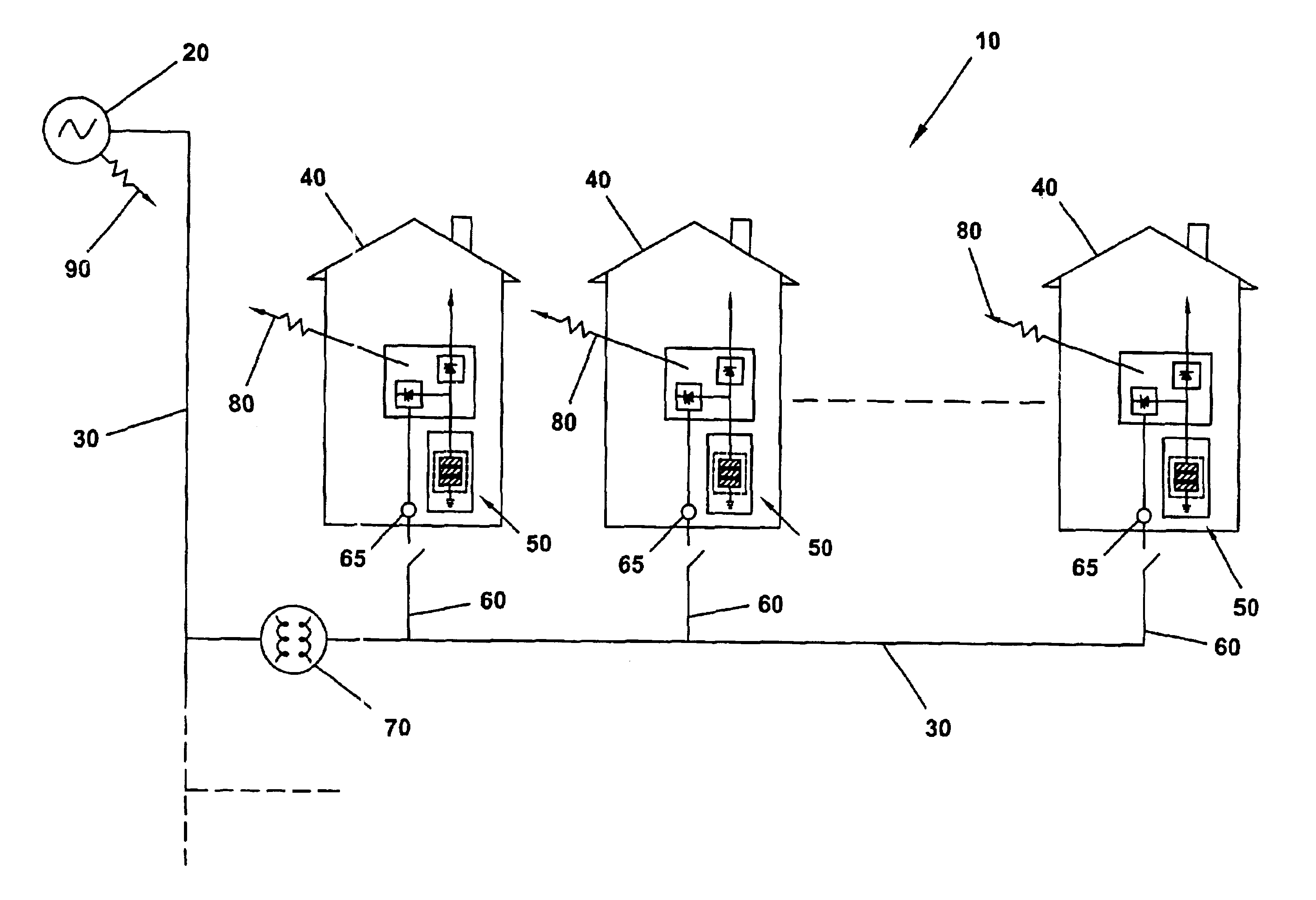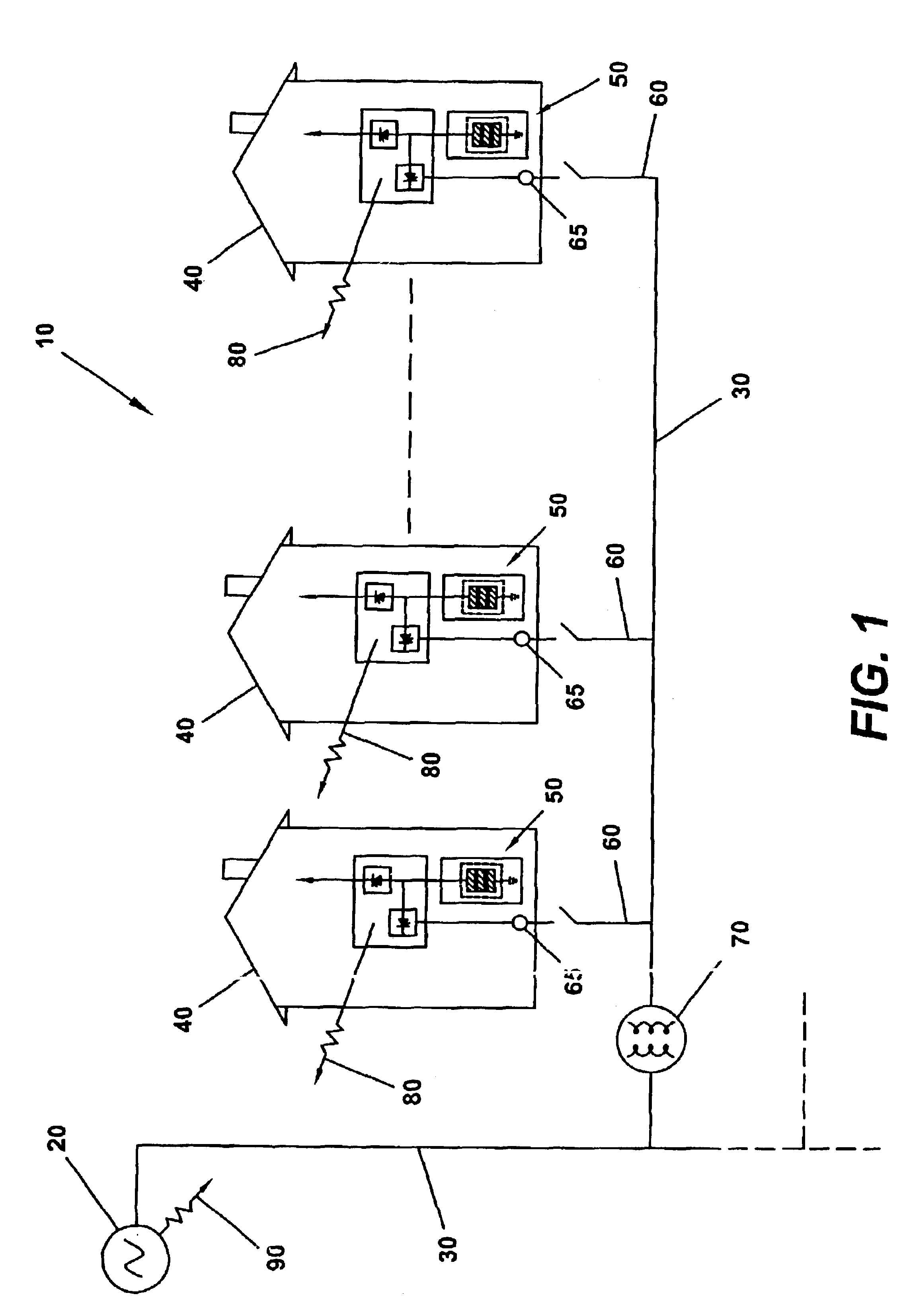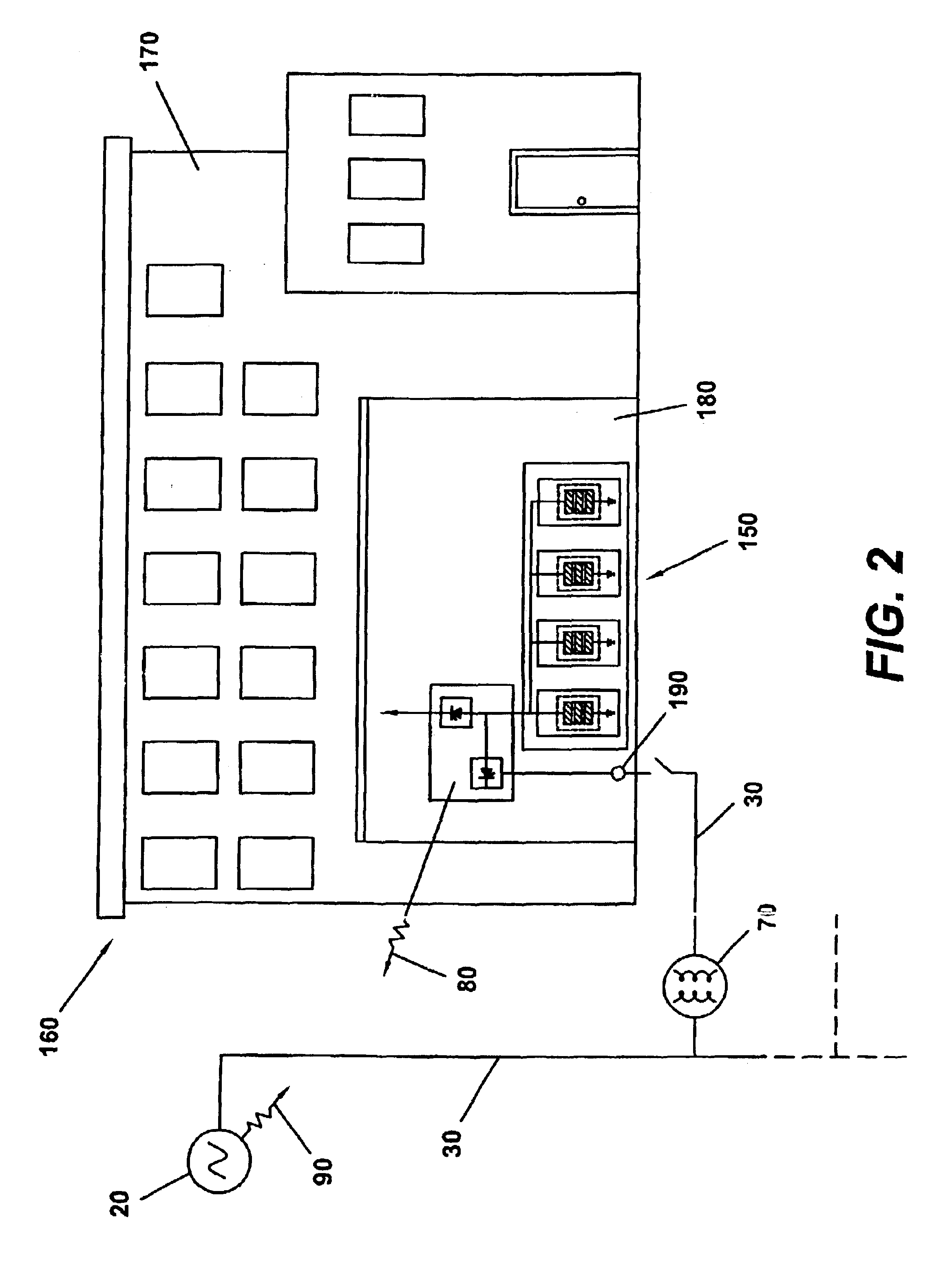Power load-leveling system and packet electrical storage
a power load leveling and packet technology, applied in emergency power supply arrangements, process and machine control, instruments, etc., can solve the problems of ineffective utilization of the design capacity of the power plant for the rest of the sixteen hours of the day, more power needs, and inability to make efficient use of the resulting power plant, etc., to achieve more long-term power, improve power quality, and reduce or even eliminate anomalies
- Summary
- Abstract
- Description
- Claims
- Application Information
AI Technical Summary
Benefits of technology
Problems solved by technology
Method used
Image
Examples
Embodiment Construction
)
[0021]Referring now to the drawings and FIG. 1, there is shown a schematic representation 10 of an exemplary embodiment of the present invention. In this embodiment, electrical energy is produced at a power plant 20 and is distributed through conventional energy transmission and distribution lines 30 to homes 40 where a capacitor storage device 50 is located. The power plant 20 may be a conventional fossil-fuel burning or nuclear power plant or, alternatively, may be a solar power, wind power, hydroelectric power, or other alternate power source. Each home may have one or more capacitor storage devices 50, each having one or more capacitors (for example, in the basement of the home) that is electrically connected, such as via a service entrance 60, to the transmission and distribution lines 30 through an electric meter 65 or similar device in order to receive an electrical charge. The electrical charge may be delivered in the form of a “packet” of electrical energy of undetermined ...
PUM
 Login to View More
Login to View More Abstract
Description
Claims
Application Information
 Login to View More
Login to View More - R&D
- Intellectual Property
- Life Sciences
- Materials
- Tech Scout
- Unparalleled Data Quality
- Higher Quality Content
- 60% Fewer Hallucinations
Browse by: Latest US Patents, China's latest patents, Technical Efficacy Thesaurus, Application Domain, Technology Topic, Popular Technical Reports.
© 2025 PatSnap. All rights reserved.Legal|Privacy policy|Modern Slavery Act Transparency Statement|Sitemap|About US| Contact US: help@patsnap.com



